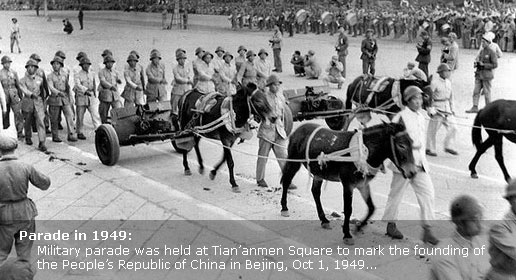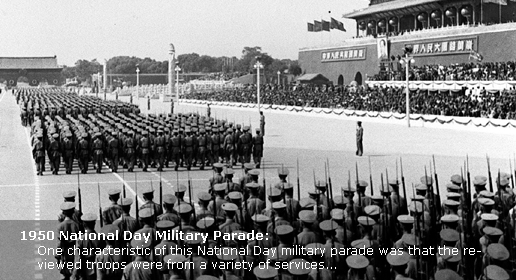Opinion
Great legacy of first three decades
By Li Ling (China Daily)
Updated: 2009-10-02 07:46
The 60th anniversary of the founding of the People's Republic of China (PRC) is really worthy of a crashing celebration. As for the academic community, it is of great significance to sum up the experience of the past six decades and discuss the real causes of "China Miracle". Scholars have been involved in disputes on whether the "China Model" has emerged since its reform and opening up. Some argue that there is such a model with Chinese style labor-intensive development strategy, "crossing the river by feeling the stones (Deng Xiaoping)" or "step-by-step reform". Meanwhile some believe China has not established a special model but only followed the "Washington Consensus".
Irrespective of "step-by-step reform" or "Washington Consensus", China is not the single country engaging in market economy and opening up, but it is indeed the only one that has kept a rapid growth rate in several consecutive decades. In fact, the legacy of the first 30 years after the founding of the PRC has contributed a lot to the current "China Miracle".
Some of the legacies are familiar to us, for example, the science and technology system of self-dependence and independent innovation, a complete national economic system, a unified domestic market, hard-earned international status and national security. Besides these well-known legacies, we should not ignore that the first three decades after the PRC was founded laid the groundwork for China's human resources reserve.
After reform and opening up, China has adopted a labor-intensive strategy, taking the advantage of its huge labor force which is youthful, healthy, low-cost and of high-quality. China's relative superiority in labor comes from its achievements in the promotion of people's health and education level and the decrease in fertility rate.
At the beginning of its reform and opening up, China held a lead in human capital level among developing countries, with some indicators reaching the level of developed countries. Life expectancy of the Chinese people had increased from around 35 years in 1949 to 70 years in the early 1980s, higher than that of some countries which were richer than China then. The infant mortality rate declined from 250 in every 1,000 to under 50 during the same period.
The illiteracy rate of the young and middle-aged had dropped to about 15 percent in 1981 from 80 percent in 1949, which is much lower than the 60 percent in India during the same time. In the early 1980s, about 90 percent of school-age children were attending school, with girls accounting for 45 percent, while the junior middle school enrollment rate reached 46 percent, which was much higher than that of other developing countries with the equivalent income.
Besides the achievements in health and education, another critical factor is the decline of China's fertility rate. The liberation and wide involvement in social activities of Chinese women and the improvement in medical conditions had resulted in the endogenous fertility rate lower than 2.0 before the family planning policy was enforced.
The great achievement in improving the quantity and quality of the Chinese population benefited from the then governance principle highlighting social fairness, the original government-led educational and medical systems and the Party's working method of following the mass line.
First, the founding fathers of the PRC firmly believe that an equal right to available education and medical care is the cornerstone of realizing social equity. As the master of the new republic, the pursuit of a new purpose in life had unleashed the boundless creativity of the masses.
Second, the Chinese government had established fully functioning systems of basic education and public health covering both urban and rural areas. Take public health, for example. New China set up labor insurance and medical care system based on State-owned enterprises and communities in cities; and, a cooperative medical system with barefoot doctors (farmer-turned-doctors) was popularized in the vast rural areas on the basis of collective economy. This original system suited the national conditions then and significantly improved China's primary health care conditions.
Third, China has explored a new low-cost social security model through giving full play to the creativity, wisdom and power of the masses and the central government also committed itself to timely summarizing and popularizing the effective initiatives.
Although great changes have taken place since 1980s, the history of the past 60 years of New China is a continuous process, which cannot be segmented. Today, while we are proud of our tremendous achievements, we should prepare high-quality human capital reserve for China's further sustainable development.
There are still many obstinate problems in China's medical care system as well as in its higher education system. To solve these issues, we need to reflect on our good experience and persist in reforms under the guidance of "people-centered scientific development". The way ahead is long with many twists and turns.
The author is a professor with China Center for Economic Research, Peking University.







